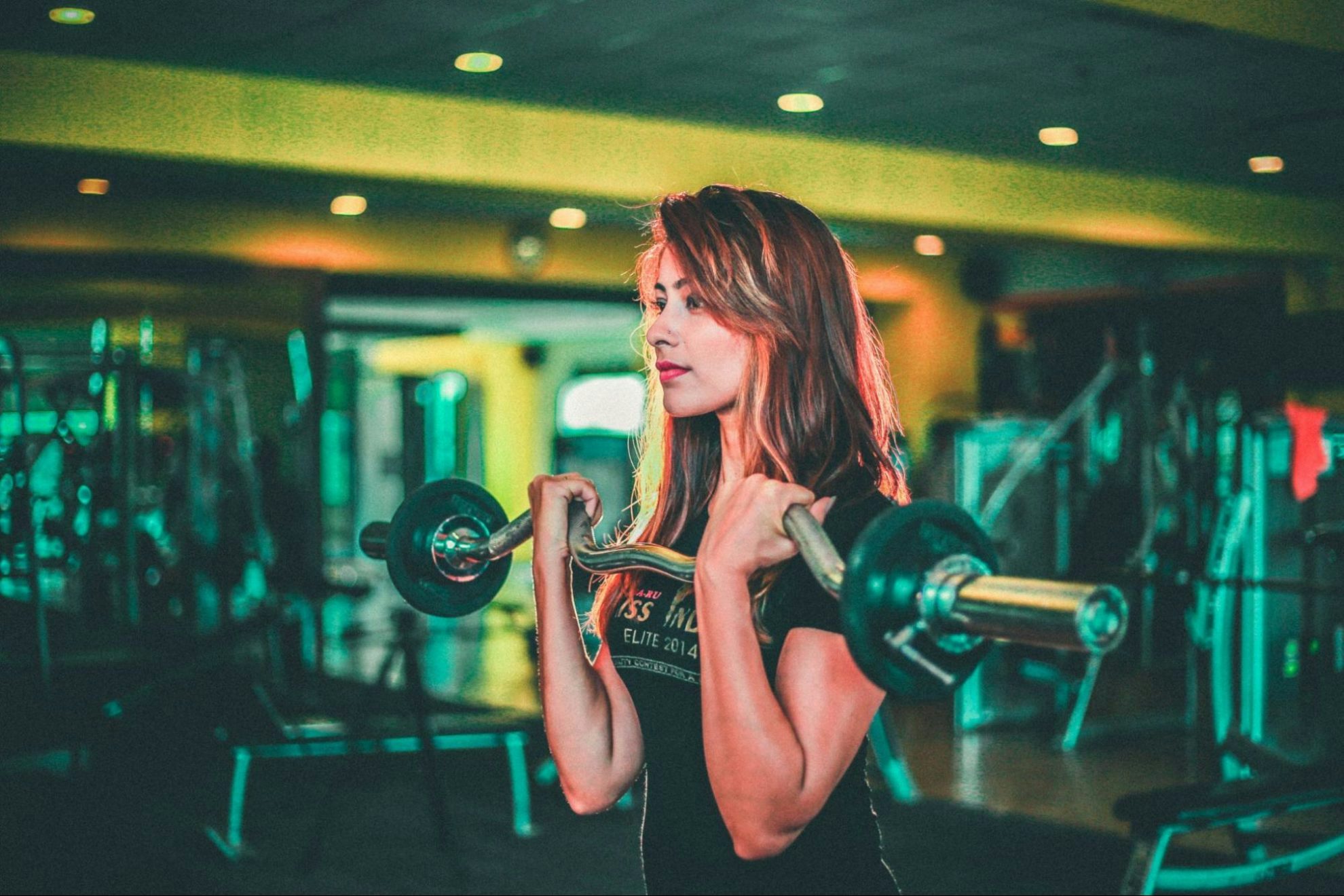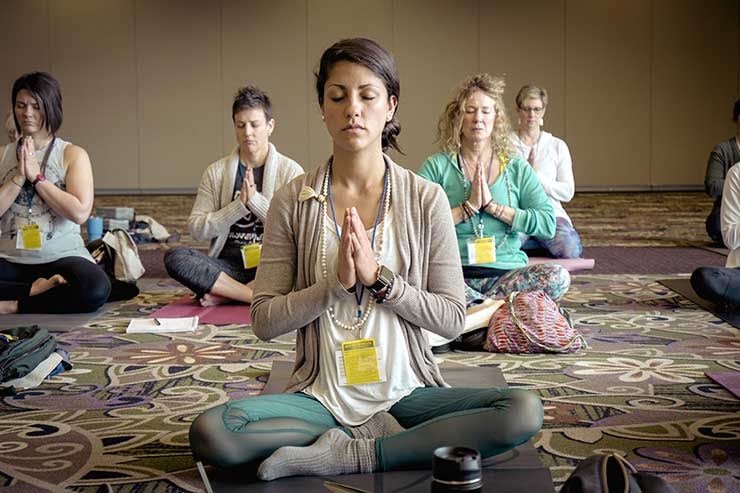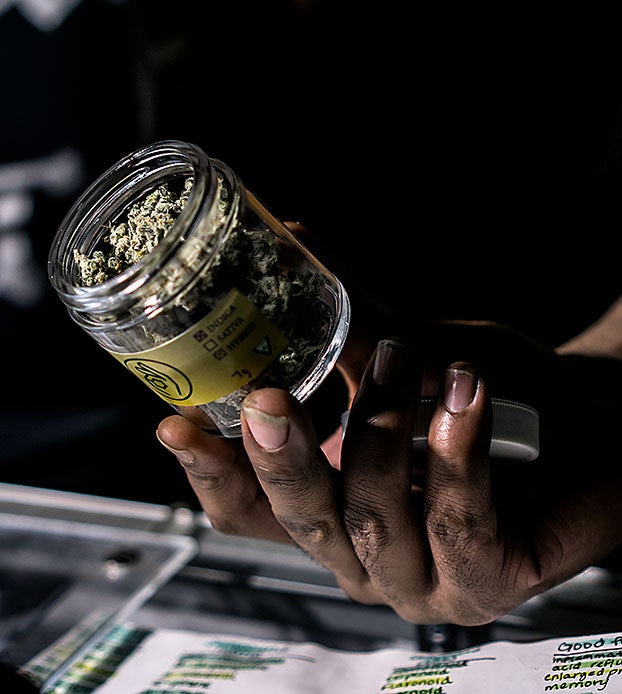It’s a lovely morning somewhere in the Blue Ridge mountains of North Carolina, and Jon Kennedy has one last step before he starts his trail run — he takes a single hit of high-THC cannabis, checks his running shoes, and he’s off.
“It makes it more enjoyable and my mind tends to be quieter when I’m out there. I feel more at peace with everything that’s around me so instead of dreading this hill I’m about to run up I’m more in the present and whatever is happening in the moment,” he said.
Kennedy is a former nuclear engineer in his late 40s who owns and runs a hemp distribution company in North Carolina. He has used cannabis as part of his workout regimen with resistance training, yoga, and especially with trail runs, during which he says marijuana helps him run in the woods “without pain in this dreamlike, joyful state.”
For the past several years, Kennedy has been part of “NORML Athletics,” a project started by the legalization advocacy group in 2012, partly in order to “battle the lazy stoner stereotype.”
Kennedy said the group aimed to change the messaging about cannabis use, but also to encourage people who use cannabis to embrace a healthy, active lifestyle, and not make the mistake of thinking they have to choose between using cannabis and taking part in sports and exercise. He said the organization also encourages members to take part in charity events (like 10k and 5k runs) that raise money and awareness for diseases that cannabis can potentially help treat, such as multiple sclerosis, cancer, and epilepsy.
Is working out high easier?
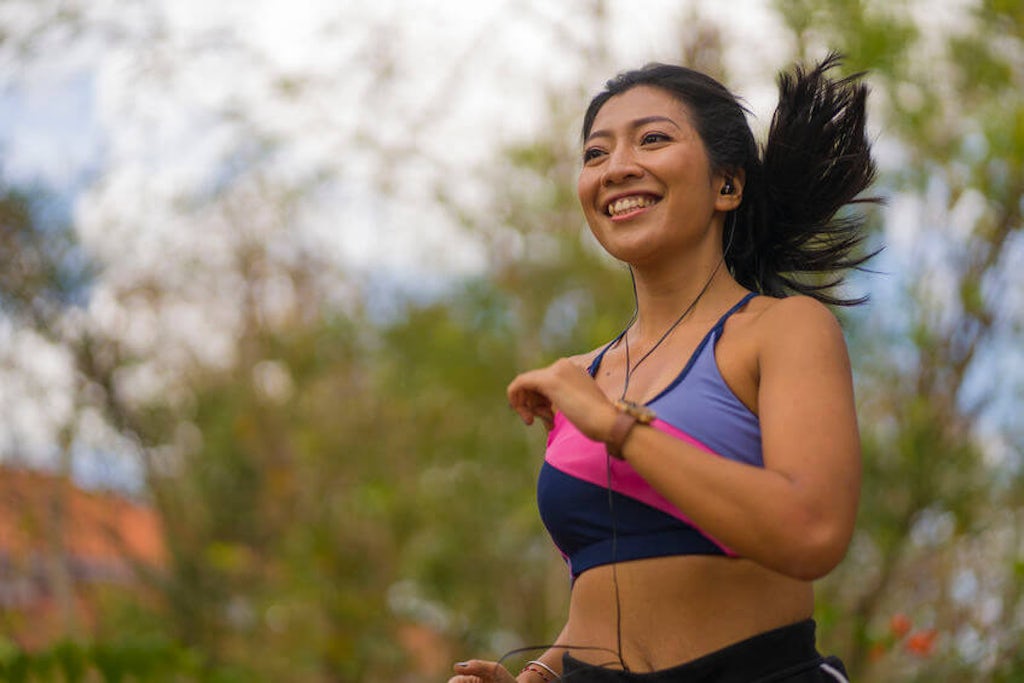
Kennedy is a big believer that cannabis can help motivate people “to get over that initial hump of taking that first step towards exercising,” and that once they start they tend to realize the benefits quickly.
“Anyone who has gone for a run without THC vs. with THC — almost everyone reports that the with THC model is more enjoyable. It’s the same with yoga. It makes people much more aware of their bodily sensations, much more present in their body.”
Kennedy said that the most common sports for NORML Athletics members are yoga, jogging, and MMA (jiu jitsu, specifically). Brazilian Jiu-Jitsu practitioners often describe their sport as puzzle solving or dynamic problem solving and cannabis may help with this aspect of the activity. Board sports enthusiasts, climbers, and boulderers are also known to be open to cannabis use.
In addition to the actual physical benefits, he said that combining exercise with cannabis can have a big effect on how people use cannabis in general, making it a more mindful, deliberate act.
“We can easily make the case that this isn’t a vice if you’re doing it deliberately, not just as an escape but as a step forward in a healthy direction.”
In legal cannabis states at least, it appears that the memo has already been received when it comes to working out with weed.
In 2019, the University of Colorado at Boulder published a study titled in part “The New Runner’s High?” which found that more than 80% of 605 respondents in states with fully legal cannabis programs supported using it concurrently with exercise. The majority of participants who supported using cannabis with exercise “reported that doing so enhances their enjoyment of and recovery from exercise, and approximately half reported that it increases their motivation to exercise.”
People who work out high work out more
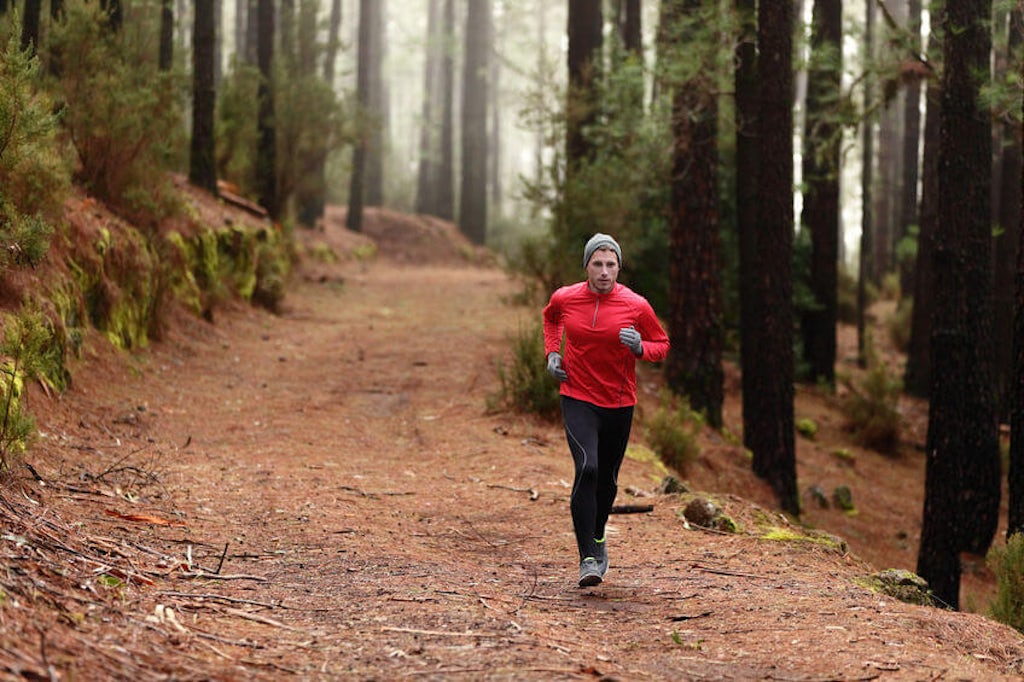
It also found that those who combine cannabis and exercise reported spending an average of 159.7 minutes per week on aerobic exercise on average, while for non-co-users, the average was 103.5 minutes.
The study was compiled using an anonymous online survey targeted towards people 21 and older in California, Colorado, Nevada, Oregon and Washington who had “liked” pages on Facebook related to cannabis use. A total of 605 people answered the cannabis-related questions on the survey. Overall, the study found that study participants who used cannabis with exercise were younger, more likely to be male, and had lower body mass index.
The researchers did note that one limitation of the study was that recruiting by way of social media “captured respondents who are invested in promoting cannabis.” In addition, they stated that overall states that have legalized cannabis have higher levels of physical activity than states that have not legalized, and that “there may indeed even be a stronger correlation between using cannabis with exercise and exercise behaviors in less active states.”
There is a growing body of research on the potential efficacy of cannabis in sports medicine, and professional sports leagues including the National Basketball Association, Major League Baseball, and the National Hockey League have all adopted much more lenient policies on cannabis just in the past few years.
Not a performance enhancing drug
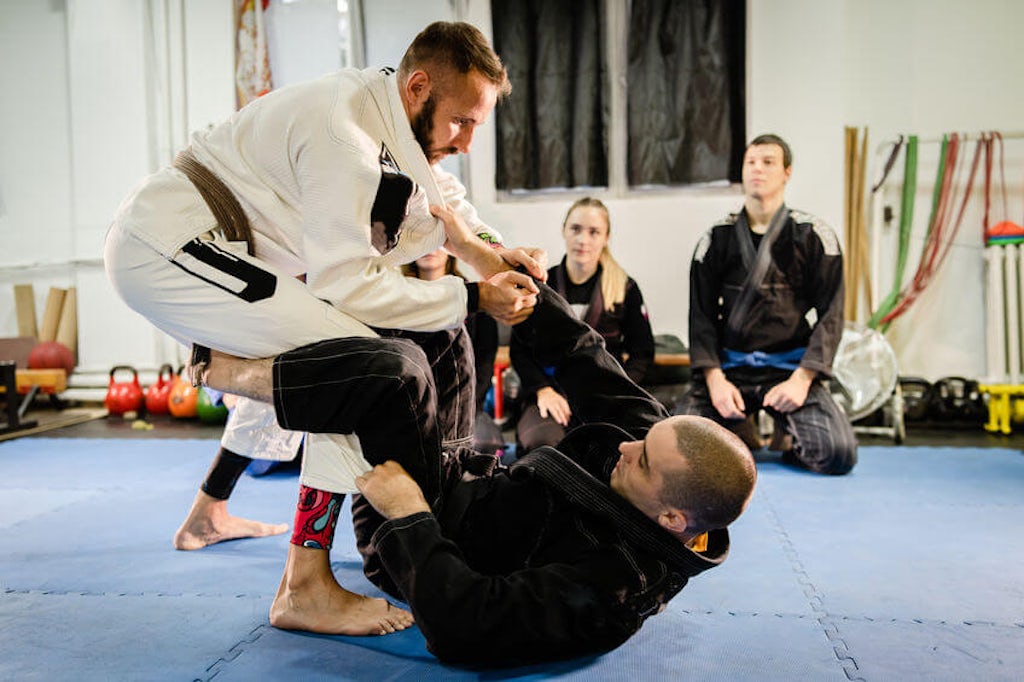
A comprehensive review from 2017 looked at 15 published studies on the effect of cannabis on exercise performance, and found that “none showed any improvement in aerobic performance,” leading them to conclude that “THC does not enhance aerobic exercise or strength.”
The review stated that two studies found that “marijuana precipitated angina at a lower work-load (100% of subjects) and strength is probably reduced.”
Overall, it said that “the small number of scientific studies all show cannabis decreases aerobic performance or has no effect on it. There are no theoretical reasons to believe it could increase strength or endurance.”
This conclusion is similar to that of a 2018 review of existing research that found “there is no direct evidence of performance-enhancing effects in athletes.” The researchers did conclude however that the potential benefits of cannabis in managing pain and reducing concussion-related systems deserves closer attention.
Meanwhile, a survey of 1,161 athletes in 2019 found “positive subjective effects were more often endorsed than adverse subjective effects,” among those who use THC, CBD, or a combination of the two.
They concluded that the “use of THC and CBD offered the most benefit to well-being and calm with low frequency of adverse effects while CBD alone offered the least positive effects.”
What are the risks of mixing marijuana with exercise?
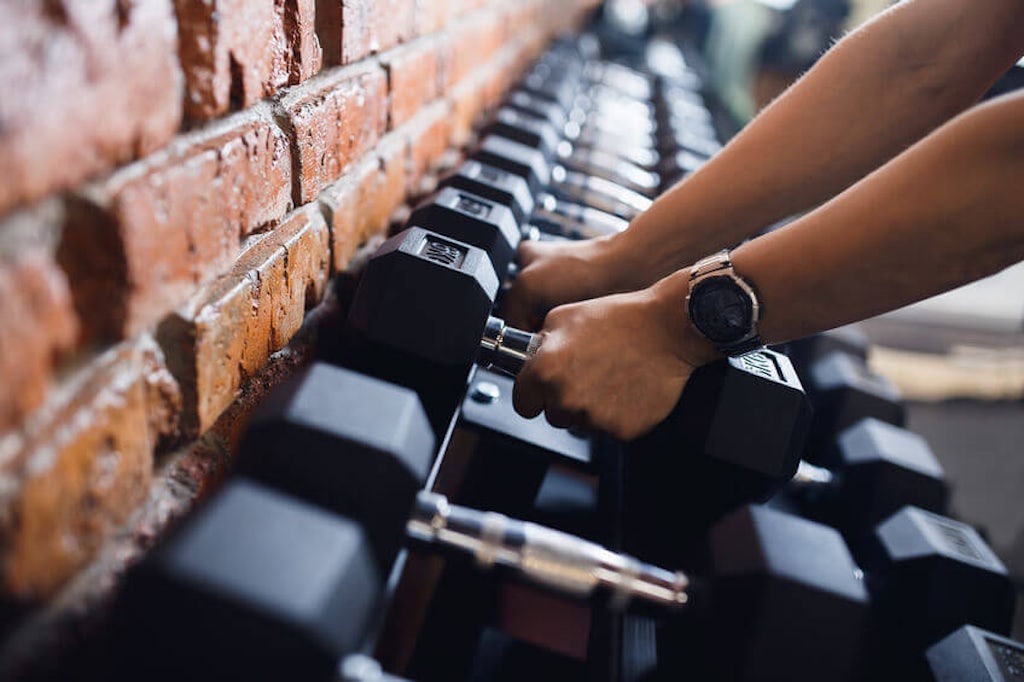
The question of whether or not mixing cannabis with sports and exercise is risky really comes down to how and which cannabinoid you use, according to Dr. Bonnie Goldstein, M.D., medical director of Canna-Centers and author of Cannabis is Medicine.
“If one is using THC-rich cannabis, impairment may occur, which in the worst case scenario, may lead to decreased coordination, altered spatial perception and decreased perception of risk, leading to accidental injury. CBD, as a non-intoxicating compound, does not appear to have any significant risks,” Dr. Goldstein said.
She added that in her experience “most physically active people, especially those that consider themselves athletes, are not interested in being impaired with THC. They often find their “sweet spot” dose, reporting benefits that include enhanced performance and motivation, as well as less anxiety, better sleep, less pain and improved recovery.”
She did note that in rare cases there are reports of “serious cardiac consequences which may be related to the use of high potency THC-rich cannabis,” though these are much less pronounced in more experienced users. She also stated that chronic heavy cannabis smoking “although so far not linked to lung cancer or COPD (chronic obstructive pulmonary disease), has been linked to bronchitis and some pulmonary changes,” adding that athletes can avoid side effects by choosing a different intake method, like vaporization or sublingual tinctures.
She also stated that cannabinoids “have proven analgesic, antioxidant, anti-inflammatory and neuroprotective properties, all of which can help with recovery from workouts,” and that THC is a known bronchodilator and can cause vasodilation, and could thus help in boosting air flow to the lungs and oxygenation to muscles.
The benefits of cannabis for athletic training and recovery

One professional athlete who has very openly combined cannabis use with training is Avery Collins, who has finished dozens of ultramarathons, including the Tor des Géants (Tour of Giants) in Italy, which covers 206 miles and 25 mountain passes in northwestern Italy.
Collins told The Cannigma that cannabis helps him “stay idle instead of always wanting to run fast. Cannabis simply reminds me to slow it down and stay patient.”
Collins has an endorsement deal with a CBD company and may be the only endurance runner sponsored by a dispensary, Boulder, Colorado’s “The Farm.”
He said that THC can make small pains and potential injuries more acute, allowing him “to make the right decision of what type of training I should be doing and at what effort that training should be done.”
Collins is very clear about the fact that he never has nor will use cannabis during an event, as it is against World Anti-Doping Association rules. His regimen involves training and recovery. After long runs and races he says THC/CBD “is crucial to shutting down the mind and body,” allowing him to get to sleep and begin the recovery process. It can also be very effective against stomach pains allowing him to eat soon after an event, Collins added.
‘It makes the run more enjoyable’

And during training, Collins says emphatically that THC helps make the whole experience a lot more fun.
“THC specifically allows me to not think so much about speed but allows me to fully embrace the trail and mountains around me. It helps my mind wander off to happy places that only make the run more enjoyable.”
He said it’s opposite from the concept of getting “in the zone,” which he said can be toxic to your mind and physical fitness if it’s seven days a week.
“There is a fine line of incredible fitness and injury when it comes to training at a professional level. This is where cannabis helps me. In a typical seven-day training week it’s vital that at least four of those runs be done at a 50% effort level, and THC helps drag me down to an easy effort as opposed to going out an all-out effort every day.”
He also said that THC prolongs the “runners high” feeling, as much as for over an hour. He added that while cannabis isn’t for everyone “it is worth a try if you’re looking for some motivation to simply get out of the door,” and that it “can allow you to fully appreciate and enjoy activities like running.”
This may be related to the role of the endocannabinoid system in the “runner’s high” phenomenon. Researchers showed that despite the popular notion that endorphins are the molecules responsible for the “high” runners sometimes feel, it’s elevated levels of anandamide (one of the main endocannabinoids, being a partial mimic of THC) that occurs after prolonged exercise that actually causes the phenomenon. Anandamide and THC act on the same receptor, so it makes sense that runners who use marijuana experience a change in the duration of the high.
‘A profound feeling of blending with the environment’
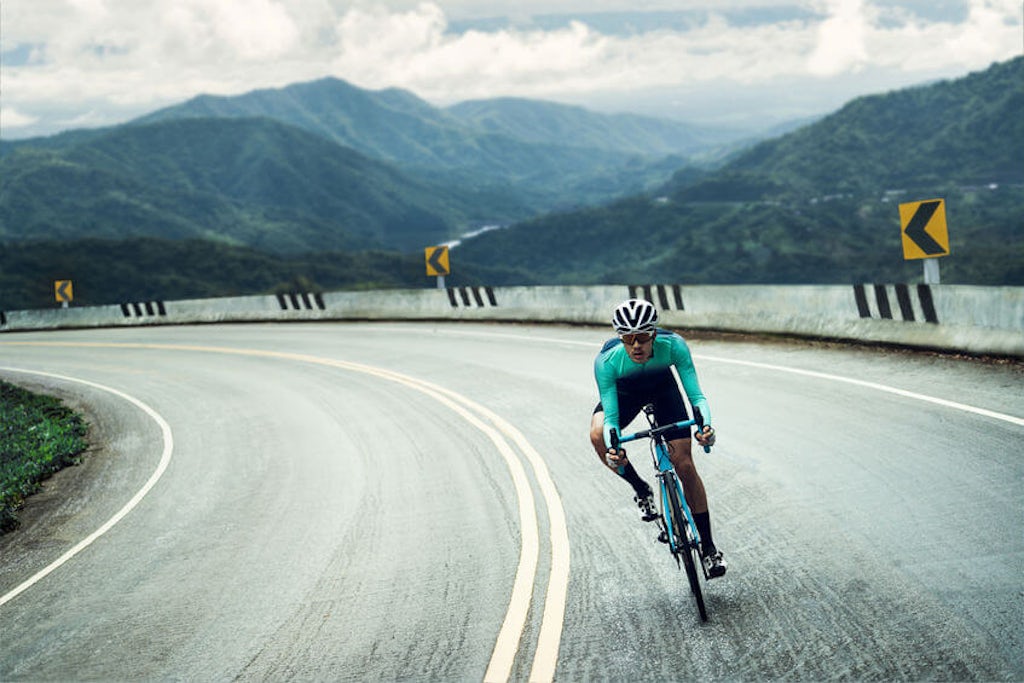
Ben Castro can clearly relate to that sentiment.
Castro, a 37-year-old ecology researcher from Chile, said that cannabis allows him to feel an “incredible feeling of connection” when doing sports, be it a connection to his bicycle on city or country rides, or to the environment around him. Castro described riding through city parks taking in the scenery when high, or looking up at the architecture as he rides down a city street, pondering the architect’s inspiration in a blissful state.
“There is a profound feeling of blending, of blending with the environment when you are riding. The use of cannabis positively enhances sports sensation. More importantly, I believe that you learn this feeling; you can create this connection the next time, even if you don’t use cannabis.”
Jill Woodworth, a 54-year-old marathoner from Rutland, Massachusetts told The Cannigma that cannabis helps create a sort of hypnotic state when running.
“It keeps you in the moment. One is able to be more present with each thought, let them pass, open to novel ideas that come through more spontaneously. It also gives me the ability to focus on my body and what I’m feeling in my muscles and joints, and fine-tune mechanics in the moment.”
She also said that using CBD after running has helped her cope with inflammation issues.
Smoking weed and lifting weights: ‘I was extremely motivated’
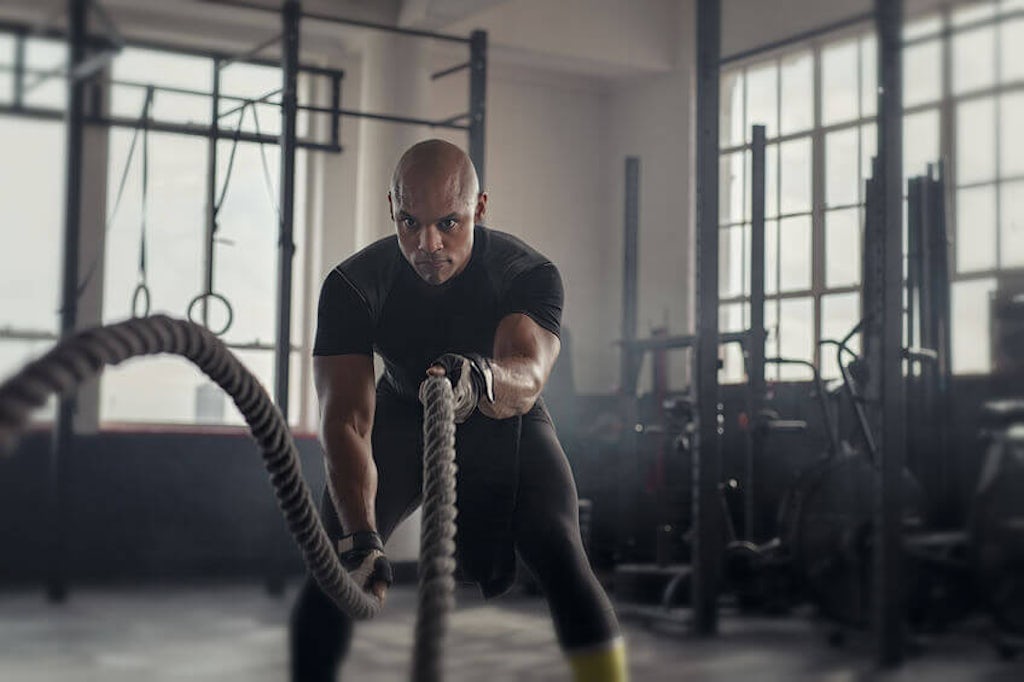
Mathias Krell, a 21-year-old native of Uruguay (and an intern at The Cannigma), said that working out with marijuana has changed not only how he exercises, but also the entire way he views the experience of getting high.
Krell said this epiphany of sorts came early in the COVID-19 pandemic, when he and the rest of his hometown of Montevideo was put on lockdown — meaning that going to the gym was no longer an option.
“Everyone was on lockdown and quarantine and I started to go to this little corner of my backyard where I had two dumbbells I hadn’t used before. So I started this routine where I’d smoke a whole joint and do at least 40 minutes of an intense workout with the dumbbells.”
Krell said “I got very engaged with it and I felt that I didn’t get tired. I was extremely motivated and super focused and it actually helped me a lot. I got back into some of the best physical shape I’ve been in in a long time, without even going to the gym.”
He also said that he found that after smoking weed and working out, his recovery was easier, and he didn’t get as sore the next day. In addition, he said that music and cannabis go together brilliantly when working out, elevating the entire experience even further.
But even when he wasn’t working out, he felt a difference in how he viewed getting high.
“Before, getting high was more of a sit down on the couch and do nothing sort of thing, but once I got into this, I focused the high on something more productive. That’s how I personally like my weed experience now. I don’t feel that it’s necessarily the basic stereotype of the stoner where you sit down, eat some chips and all that.”
Sign up for bi-weekly updates, packed full of cannabis education, recipes, and tips. Your inbox will love it.

 Shop
Shop Support
Support
